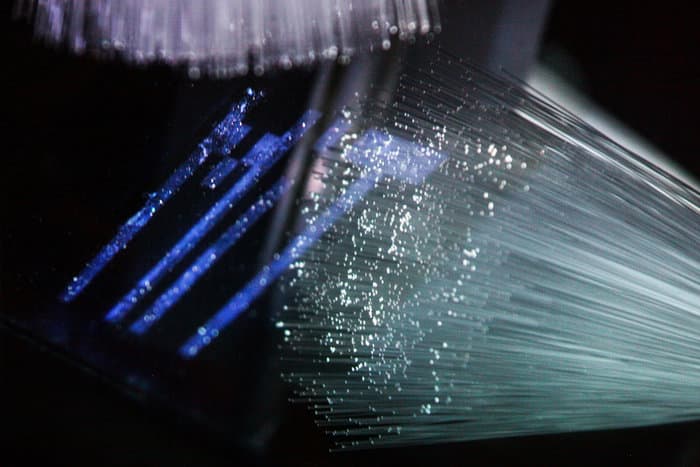New Optical Painting Tool Set To Significantly Upgrade Medical Imaging Techniques
MIT’s media lab has devised an open ended optical fiber based imaging system that requires no extra protective case. Named “optical brushâ€, this open ended bundle of optical fibers use time of flight technology to image and sense complex environments. This newest customization is expected to add a new dimension to laser treatment and other light based imaging applications.
These fibers are connected to photo-sensors at one end and the other end is free to paint. The positions of the fibers’ free ends are not placed in a way corresponding to the position of photo-detectors in an array. The “Time of Flight†method calculates different times at which short bursts of light reach the photodetectors and determine the relative locations of the fibers. Barmak Heshmat, lead author of the research from the Camera Culture group at the Media Lab of MIT explained that the beauty of their experiments lies in the idea of using “time of flight†to interpret the new interface for imaging.

Optical Brush
In the lab, the team had chosen 1,100 loose fibers lying free at one end and stationed opposite a screen on which symbols were projected. The other end of the bundle was attached to a beam splitter, which was further connected to both an ordinary camera and a high-speed camera that can differentiate between the times of arrival of different optical pulses. Two external ultrafast laser sources shot light bursts which were recorded by high speed cameras.
As bursts of light emanated from two different directions, a perpetual algorithm exploited the differences in arrival time to interpret a two-dimensional map of the positions of the fibers’ tips. The software then applied deductive logic to analyze the information while filtering the scrambled image.
 Applications of Optical Brush
Applications of Optical Brush
Mona Jarrahi, an associate professor of electrical engineering at the University of California at Los Angeles expressed the fact that incorporating “time of flight†from depth perception to computational imaging has proven to be an ideal move which could well revolutionize imaging prospects. This newly developed state-of-the-art facility is expected to be very useful for endoscopy of the small intestine. The research was published in the “Nature Scientific Reports†journal and was co-authored by <a href="https://www.crazyengineers.com/threads/need-help-in-understanding-a-crucial-concept-in-perceiving-the-femto-second-photography.86149">Need help in understanding a crucial concept in perceiving the femto second photography</a>, leader of the Media Lab’s Camera Culture group and Ik Hyun Lee.
Watch future technologies and methodologies for imaging and sensing:
Source: <a href="https://news.mit.edu/2016/imaging-optical-fibers-brush-0212" target="_blank" rel="nofollow noopener noreferrer">Imaging with an “optical brush” | MIT News | Massachusetts Institute of Technology</a>| #-Link-Snipped-#
These fibers are connected to photo-sensors at one end and the other end is free to paint. The positions of the fibers’ free ends are not placed in a way corresponding to the position of photo-detectors in an array. The “Time of Flight†method calculates different times at which short bursts of light reach the photodetectors and determine the relative locations of the fibers. Barmak Heshmat, lead author of the research from the Camera Culture group at the Media Lab of MIT explained that the beauty of their experiments lies in the idea of using “time of flight†to interpret the new interface for imaging.

Optical Brush
As bursts of light emanated from two different directions, a perpetual algorithm exploited the differences in arrival time to interpret a two-dimensional map of the positions of the fibers’ tips. The software then applied deductive logic to analyze the information while filtering the scrambled image.
 Applications of Optical Brush
Applications of Optical Brush Mona Jarrahi, an associate professor of electrical engineering at the University of California at Los Angeles expressed the fact that incorporating “time of flight†from depth perception to computational imaging has proven to be an ideal move which could well revolutionize imaging prospects. This newly developed state-of-the-art facility is expected to be very useful for endoscopy of the small intestine. The research was published in the “Nature Scientific Reports†journal and was co-authored by <a href="https://www.crazyengineers.com/threads/need-help-in-understanding-a-crucial-concept-in-perceiving-the-femto-second-photography.86149">Need help in understanding a crucial concept in perceiving the femto second photography</a>, leader of the Media Lab’s Camera Culture group and Ik Hyun Lee.
Watch future technologies and methodologies for imaging and sensing:
Source: <a href="https://news.mit.edu/2016/imaging-optical-fibers-brush-0212" target="_blank" rel="nofollow noopener noreferrer">Imaging with an “optical brush” | MIT News | Massachusetts Institute of Technology</a>| #-Link-Snipped-#
0
